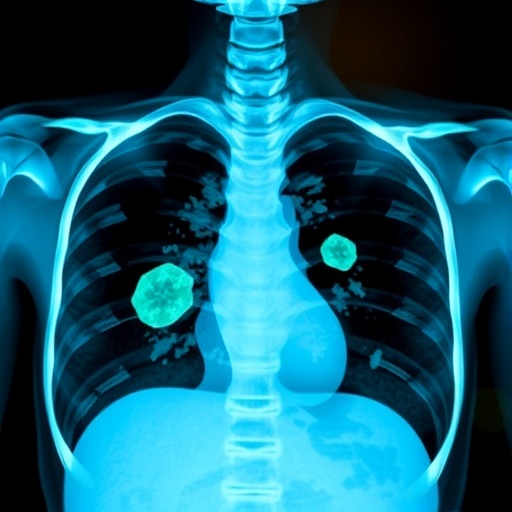Innovative Approaches to Emotion Regulation in South Africa: A Study on Integrative Physical Activity Programs for Adolescents
In the evolving landscape of adolescent mental health, a recent study has illuminated the potential of integrating physical activity with emotion regulation programs, especially within the context of low-income settings in South Africa. The research explores the perceived feasibility and acceptability of an innovative program designed specifically for older adolescents, a demographic that is particularly vulnerable to mental health challenges. This study underscores a critical intersection between physical well-being and emotional resilience, offering a template that could be beneficial to similar demographics globally.
The study, conducted by a team of researchers including Ward-Smith, Sorsdahl, and Berking, among others, examines the responses of participants from poorer backgrounds regarding an innovative emotion regulation program that incorporates physical activity elements. The pressing need for such interventions is increasingly recognized, as mental health issues continue to rise among youth, particularly in economically disadvantaged environments. The researchers sought to assess how well this new approach would resonate with its target audience, which comprised older South African adolescents facing various socio-economic challenges.
During the qualitative study, participants engaged in discussions about their experiences with the program. Their responses were overwhelmingly positive, indicating not just acceptance but also a perceived utility in the activities promoted within the initiative. These findings suggest that physical activity can serve as a powerful conduit for emotion regulation, enhancing mental resilience among adolescents who often grapple with emotional disturbances due to environmental stressors. The researchers argue that incorporating physical activity into emotional regulation strategies can yield significant benefits, especially for those who may not readily have access to traditional therapeutic resources.
The focus of this investigation was not merely on participation rates but also on gauging how participants felt engaged with the program. Understanding the emotional and social contexts in which these adolescents operate was crucial. The qualitative approach allowed researchers to delve deeper into the subjective experiences of the participants, providing rich insights that numbers alone could not convey. This methodological choice highlights the importance of hearing the voices of the very demographics the program aims to assist, ensuring that their needs and preferences shape future interventions.
One of the standout elements of the study was its emphasis on culturally relevant and accessible programming. Many existing emotion regulation programs may not resonate culturally with participants, limiting their effectiveness. In South Africa, where socio-economic disparities significantly influence access to mental health resources, the tailored nature of this program represents a refreshing and necessary shift. It is an acknowledgment that effective mental health strategies must factor in cultural dimensions and provide contextually appropriate solutions.
The concept of physical activity as a tool for emotional regulation is grounded in a substantial body of research. Regular physical exercise has been linked to improved mood, decreased anxiety, and a greater sense of overall well-being. However, this study highlights how the integration of physical activity purposes with emotional health initiatives can create a holistic approach—one that fosters not only the health of the body but also nurtures the mind. The findings suggest that when adolescents participate in enjoyable and engaging physical activities, they may develop better mechanisms for coping with stress and emotional turbulence.
Participants reported not only improvements in mood but also in their overall social connections. The program fostered a sense of community among participants, which is often vital for adolescents who feel isolated in their struggles. This social interaction provided layers of emotional support that reinforced the program’s objectives and helped mitigate feelings of loneliness and despair. In today’s digital age where adolescents are increasingly disconnected from each other due to technology, creating spaces for meaningful interaction is more important than ever.
The expressed feasibility of the program, as noted by participants, speaks to its practical implementation in low-resource settings. The study suggests that with minimal resources and appropriate training for facilitators, similar programs could be rolled out to various areas, addressing the pressing mental health needs of adolescents everywhere. This grassroots approach could empower local communities, galvanizing collective action towards improving the mental health of their youth.
The findings from this study not only contribute to the scientific understanding of emotion regulation but also beckon stakeholders in education, health, and policy to take notice. The voices of adolescents in South Africa serve as a powerful reminder that with the right support systems in place, it is possible to foster resilience amidst adversity. The implications for prevention programs in schools and other youth-focused organizations are profound; integrating physical activities into existing curricula could pave the way for enhanced emotional health among students.
As the authors of the study wrap up their findings, they advocate for further research that expands on this foundational work. Future studies could explore long-term outcomes of participating in such programs, examining whether the benefits manifest beyond the program’s duration. Additionally, investigating how varying forms of physical activity influence emotion regulation could provide deeper insights and strategies that can be tailored for diverse populations.
The study acknowledges the constraints typically faced in implementing health interventions in low-income settings, such as funding limitations and the need for trained personnel. However, the positive feedback from participants serves as a compelling argument for investment in such innovative approaches, suggesting that the social return on investment could be significantly higher than the costs incurred. In a world where mental health issues are alarmingly on the rise, finding viable and responsive solutions is essential.
The potential of such emotion regulation programs coupled with physical activity, particularly among adolescents who are still developing their identity and coping mechanisms, could fundamentally reshape approaches to youth mental health globally. It invites a rethinking of current paradigms and encourages collaborative efforts to disseminate these findings widely, fostering widespread adoption of this integrative methodology.
In summary, the qualitative study investigating the perception of an emotion regulation program imbued with physical activity elements holds promise not only for South African adolescents but also for similar populations worldwide. Emphasizing the importance of cultural relevance, community engagement, and the neuroscience of physical activity opens numerous doors for enhancing emotional health among youth. Such interdisciplinary approaches pave the way for innovative solutions that address the complexities of adolescent mental health in a global context.
Subject of Research: Integrative Physical Activity Programs for Emotion Regulation in Adolescents
Article Title: Perceived feasibility and acceptability of an innovative emotion regulation programme with physical activity elements for older South African adolescents from low-income settings: a qualitative study.
Article References:
Ward-Smith, C., Sorsdahl, K., Berking, M. et al. Perceived feasibility and acceptability of an innovative emotion regulation programme with physical activity elements for older South African adolescents from low-income settings: a qualitative study. BMC Pediatr 25, 921 (2025). https://doi.org/10.1186/s12887-025-06280-6
Image Credits: AI Generated
DOI: https://doi.org/10.1186/s12887-025-06280-6
Keywords: Adolescent Mental Health, Emotion Regulation, Physical Activity, South Africa, Qualitative Study, Community Engagement, Cultural Relevance, Innovation in Mental Health.
Tags: emotion regulation strategies for adolescentsemotional resilience in teenagersinnovative programs for youthintegrative physical activity interventionslow-income settings and mental healthparticipatory approaches to adolescent wellbeingphysical activity and mental healthphysical well-being and emotion regulationqualitative research on youth programssocio-economic challenges in mental healthSouth Africa adolescent mental healthyouth mental health interventions





